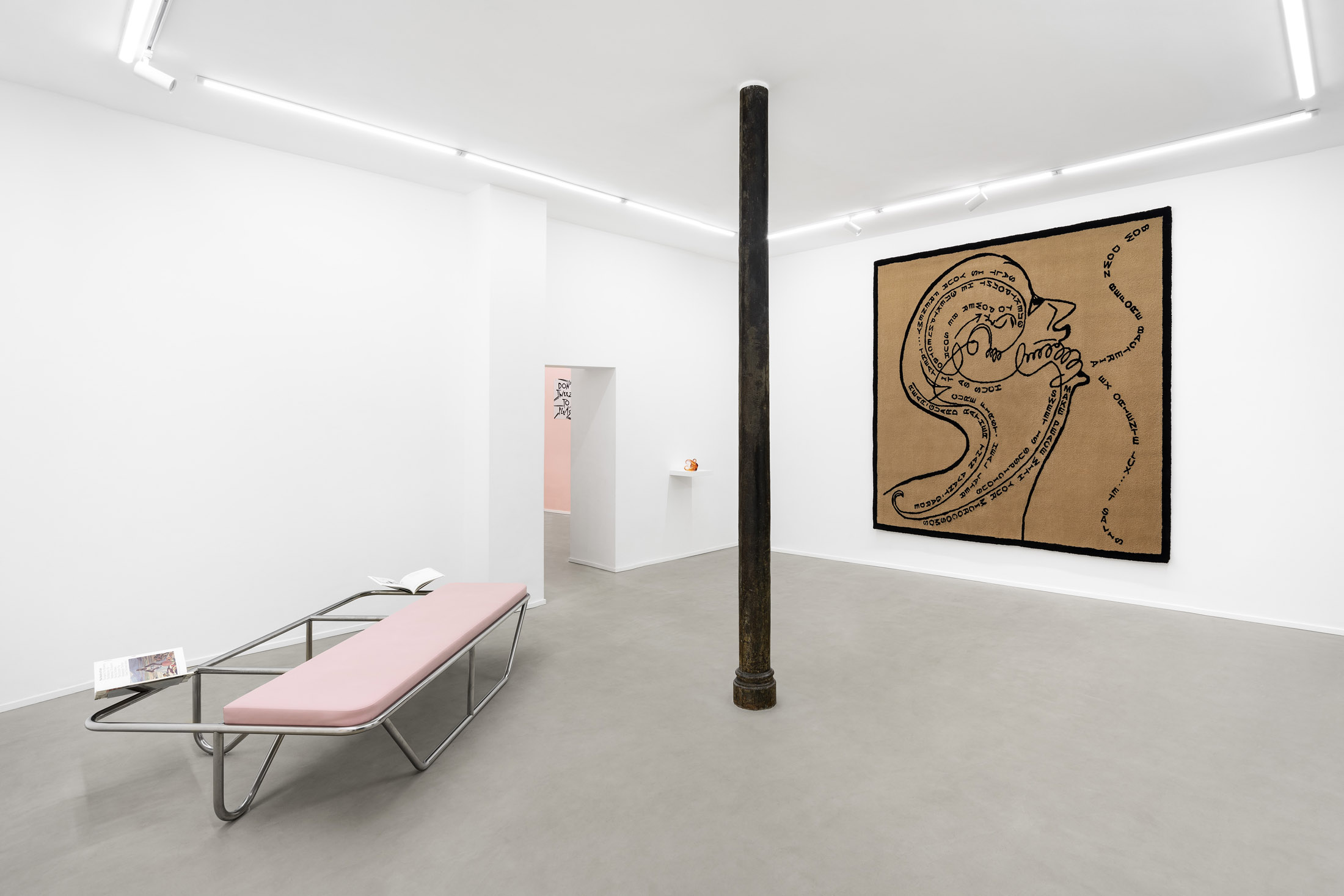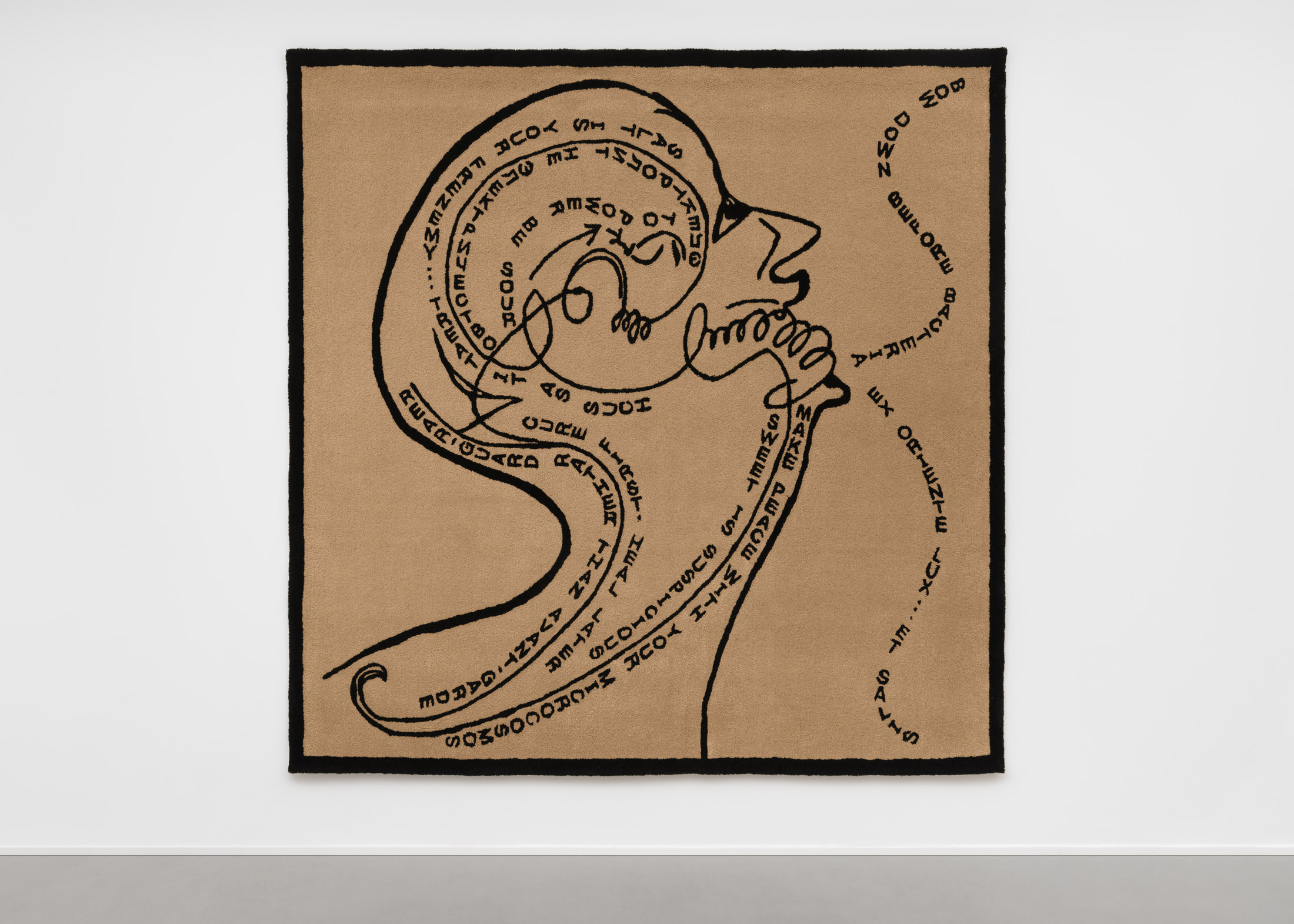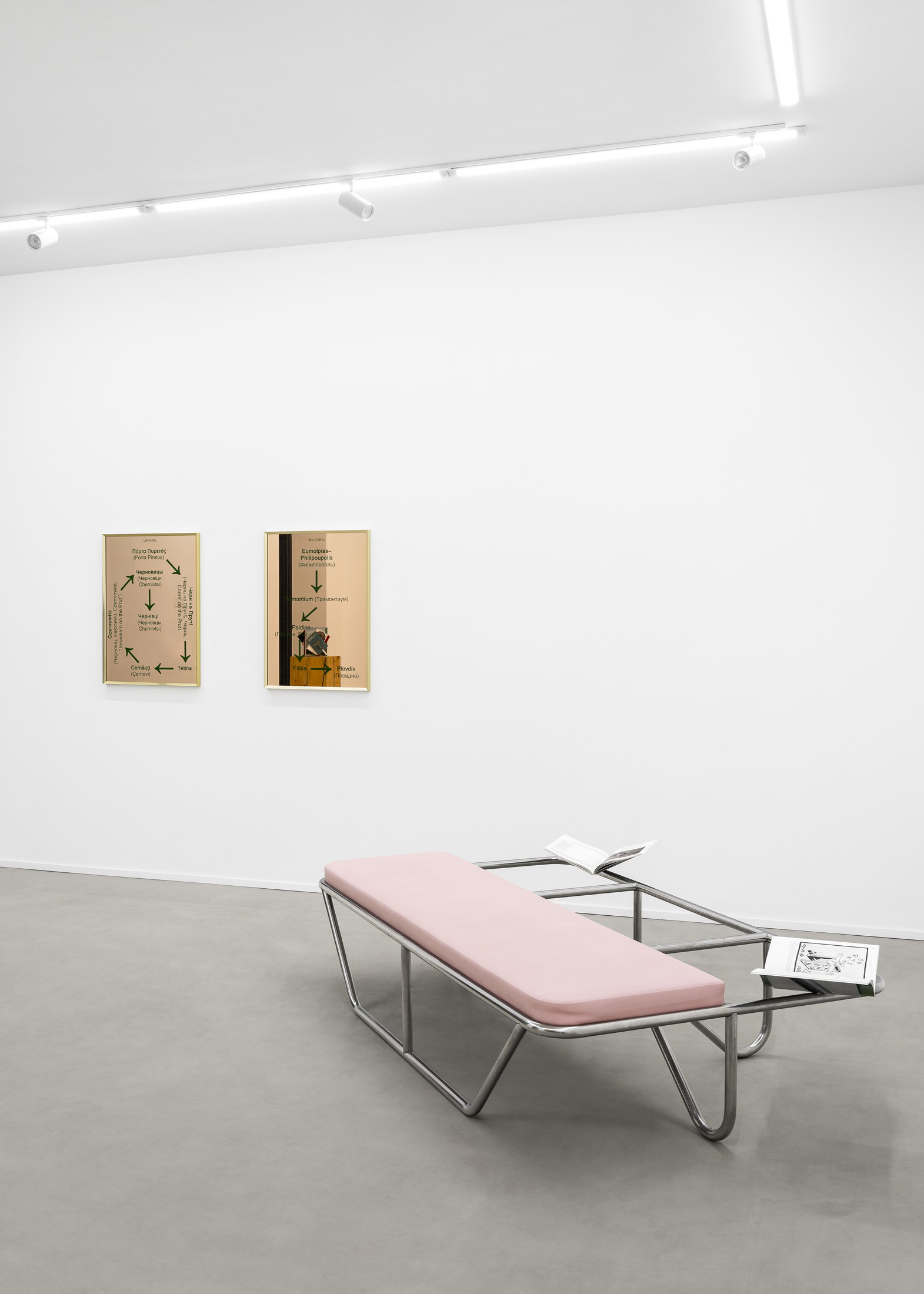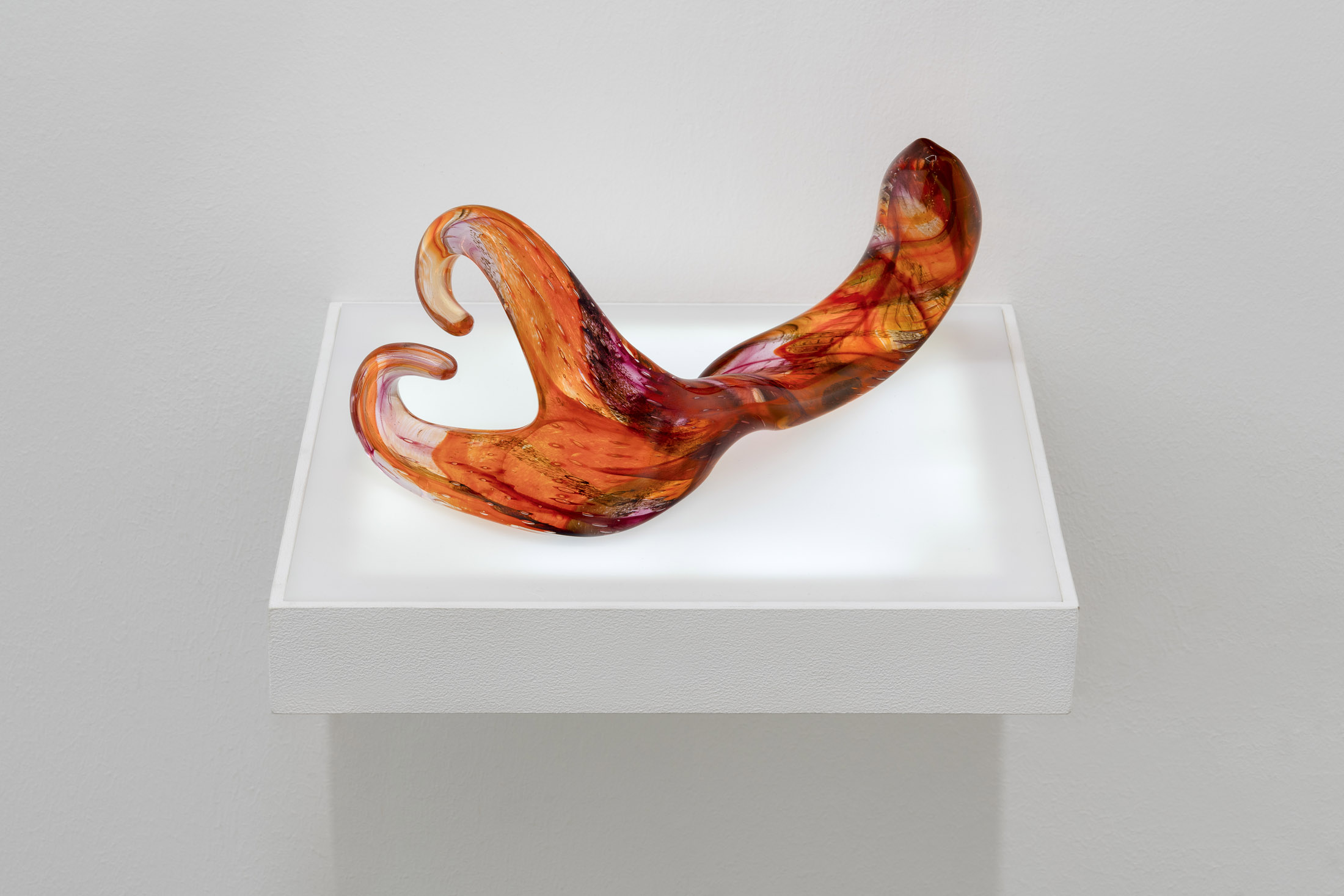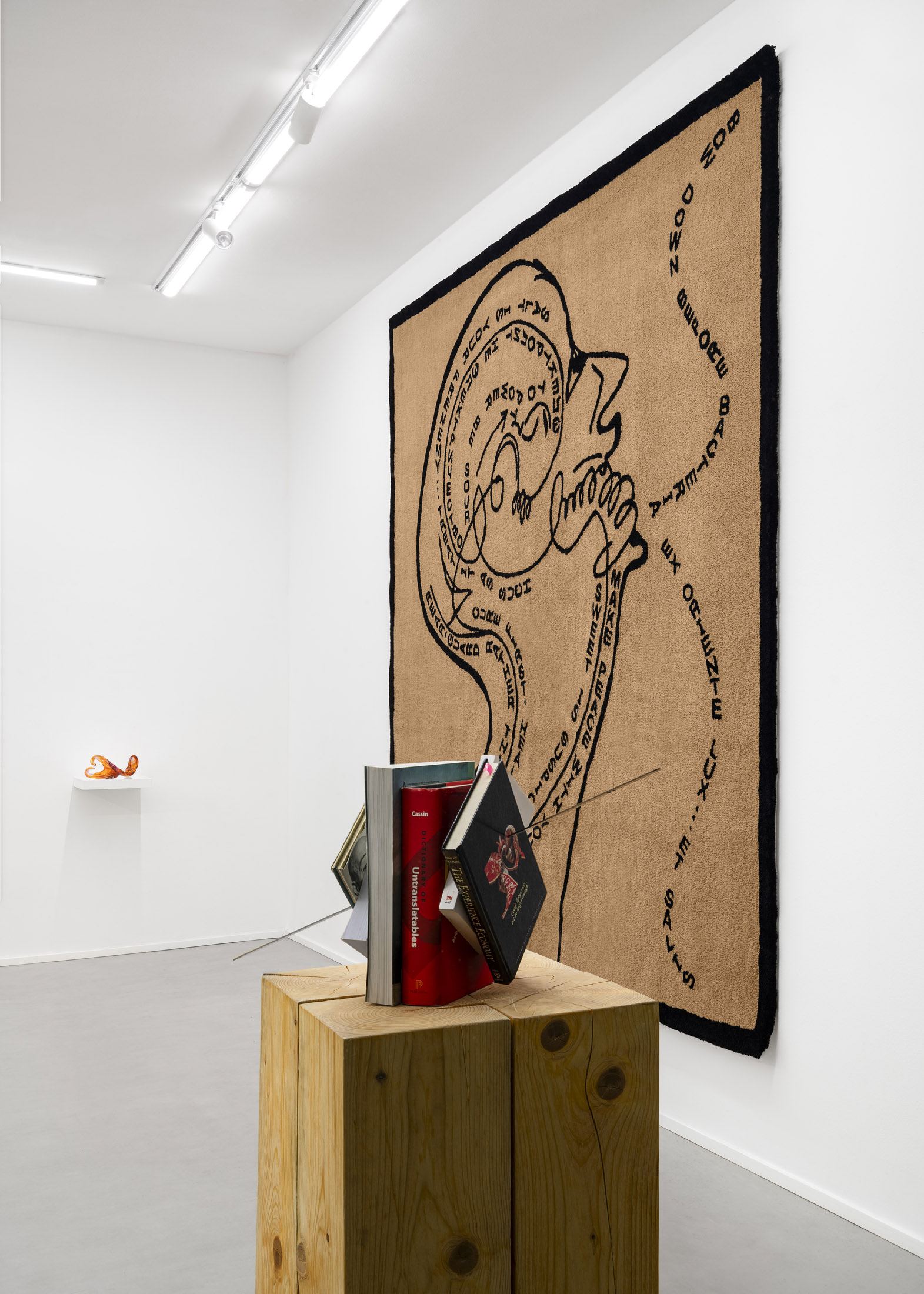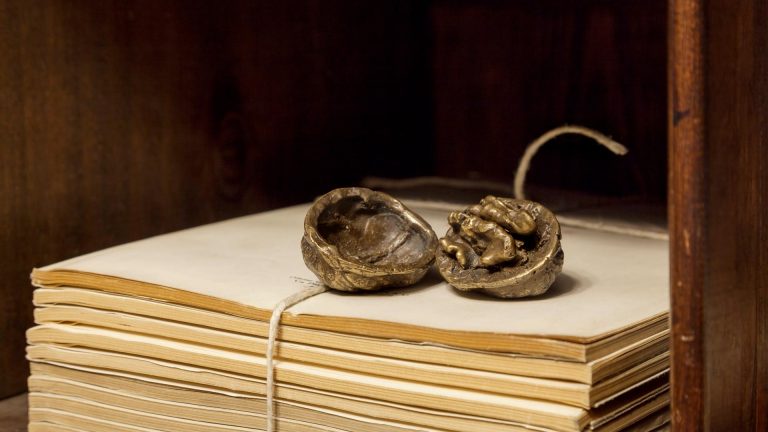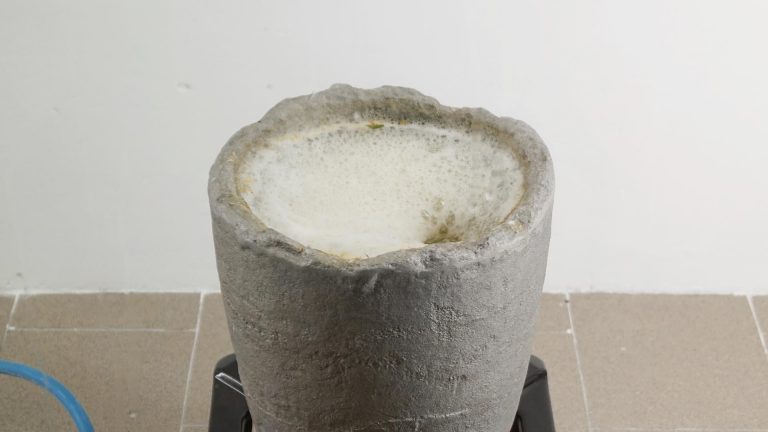Artists: Slavs and Tatars
Exhibition title: Salty Sermon
Curated by: Zoë De Luca Legge
Venue: eastcontemporary, Milan, Italy
Date: November 24, 2023 – January 27, 2024
Photography: Tiziano Ercoli / all images copyright and courtesy of the artists and eastcontemporary, Milan
Fermented is Political
Fermentation is the result of a controlled decaying process; an integral part of the natural cycle that embodies the transition from one stage of life to another. A reflection of the transient nature of existence, deteriorating processes testify to nature’s transformative power that allows one form of matter to evolve into something new. These processes feature among the most lively environments on the planet, as bacteria play crucial roles in the complexity and interconnectedness of the natural world and living things.
Despite its undeniable significance, fermentation is often seen as unsettling due to its association with rotting, which in turn triggers instinctive aversion in many people. However, decaying matter is actually teeming with life – and therefore sensuality – further proof of our inability to recognize that even in decomposition there is great beauty. Both sex and fermentation involve processes of creation, transformation, and growth, and incorporate a dual nature of pleasure and control. Though they don’t seem to be natural allies, fermentation, and sensuality share perspectives that are not at all antithetical to the act of reading. All three are transformative dynamics nurtured by an element of patience and anticipation, as they require time for the process to unfold. They contribute to an experience of deep exploration and understanding that can lead to visceral connections.
Salty Sermon is Slavs and Tatars’ first solo show at eastcontemporary and presents a selection of artworks that investigate the organic relationship between language and the practice of reading via the unlikely phenomenon of fermentation. With works drawn largely from the collective’s Pickle Politics cycle, which delves into the microbial world within and around the human body, Salty Sermon looks to fermentation as a means of reconsidering political agency, from the analogies found between the microbial processes of decay and metaphysical transformation to those of broader societal or political phenomena.
Salty Sermon (2020), the central work in the exhibition, is a manifesto of pickling in the form of a large tufted wool carpet. Here fermentation is presented not only as a culinary technique but as a process that challenges conventional notions of preservation and epistemology. Unlike more traditional – and almost germophobic – means, pickling allows conservation through a calculated form of decay. This counterintuitive approach, where something is accomplished through its apparent opposite, presents a challenge to Enlightenment principles which often rely on dualistic thought and blunt, oversimplified categorization. Inspired by the work of Russian symbolist Andrei Biely, the work’s subject serves as a hymn to bacteria, yeast, and other microorganisms, to suggest a more complex and nuanced understanding of cultural, intellectual, or historical preservation.
Intellectual nourishment is a central topic also in Kitab Kebab (2020), where a sprawling stack of Slavs and Tatar’s books is diagonally pierced by an oversized brochette, questioning the frontal methodology toward knowledge acquisition. The title combines the term kitab, which is derived from Arabic and Persian, meaning “book” or “scripture”, and the word kebab, a culinary term representing a method of cooking meat, particularly associated with the Middle East. The violent act of skewering meat to roast it is juxtaposed with the delicate act of browsing pages to read them, illustrating once again two opposite approaches, this time to layered food – one for eating, another for thought. The word play suggests a relationship with text that extends beyond mere analysis and encompasses affective and digestive dimensions. The analogy between the brain and the articulated structures of the stomach reminds us that all parts of our bodies are sensitive and receptive organs that simply speak different languages.
Similarly, Hung and Tart (2016) also focus on the unexpected parallel between two different organs of the human body. The sculpture represents a heart morphing into a tongue, thus symbolizing a shortcut between the conceptualization of speech and its immediate and heartfelt expression. The work’s title also adds a sense of anticipation or desire, alluding to a connection between the organs of speech, digestion, and sexuality.
The exhibition space includes Underage Page and Down Low Gitter (2018), two works that invite visitors to sit and read. The two sculptures are made of stainless steel and upholstered leather and belong to an extensive series inspired by crowd-control mechanisms. Known as Gitter in German, these elements typically function as a barrier or grid used for guiding and controlling crowds. Slavs and Tatars have adapted the crowd-control mechanism to specifically accommodate the practice of reading, hinting at the civilizing and communal act of reading.
Produced on a 1:1 scale from the original Gitter, and re-designed in the manner of a triclinium, Down Low Gitter (2018) emphasizes a direct relationship with reality, prompting viewers to reflect on the intersections between public spaces, and a shared and enjoyable practice of reading.
On the other end, Underage Page (2018) consists of a single seat and a bookrest, applied to the wall and connected by a metal tube. The tube between the reader’s legs is reminiscent of those for pole dancing, yet it also turns the reading seat into a prison stool. This minimal element may serve as a tool for sensuality, suggesting an intimate and pleasurable aspect of reading – and can be seen as a means of control, implying discipline or penance while reading. A duality that becomes even more impactful in the realm of religious texts, where the experience can encompass both liberation and submission. The artwork also invites contemplation on the transformative shift in the history of reading, emphasizing the move from a communal and predominantly oral nature before the affordability of print technology, which led to a more individualized experience. This change provides the autonomy to engage with texts independently, enabling critical thinking. It’s a marked departure, especially concerning scriptures, where interpretations historically leaned towards vertical, dogmatic approaches.
Originally conceived as an artist book, the mirror series Love Me, Love Me Not (2018) speculates on the dualistic or otherwise more fluid nature of the written word as well. The artwork delves into the historical and geopolitical shifts encapsulated in the genealogy of a given city’s name. The mirrors portray the continuous changes in nomenclature, showcasing how these are intricately linked to the recurring impacts of empires, states, and populations throughout the past. Love Me, Love Me Not draws attention to the process of changing cultural landscapes, inviting us not only to acknowledge the often-overlooked Asian or Muslim heritage of a seemingly European city but to echo the mutable nature of cultural identity.
For over 15 years Slavs and Tatars have committed to examining the region known as Eurasia, delving into the intricacies of this geopoetic space by challenging stereotypical heritages and prevailing narratives. They deepen our understanding of how colonial and Eurocentric control have shaped cultural, linguistic, and historical frameworks, fostering a critical interrogation of existing power structures. In these tumultuous times, their work underscores the enduring importance of urging viewers to reassess dominant narratives.
-Zoë De Luca Legge
Founded in 2006, Slavs and Tatars is a “faction of polemics and intimacies devoted to an area east of the former Berlin Wall and west of the Great Wall of China known as Eurasia.” The Berlin-based collective explores the complexities of this region by challenging stereotypical heritages and dominant narratives. Their practice researches identity, language, traditions, and myths through exhibitions, books, and lecture-performances. They have published over twelve books and recently opened the Pickle Bar, a Slavic aperitivo bar-cum-project space next to their studio.
Recent solo and group shows include Tanya Bonakdar Gallery, (Los Angeles), Kraupa-Tuskany Zeidler (Berlin), CHAT (Hong Kong), MHKA (Antwerp), Henry Moore Institute, (Leeds), the 58th Venice Biennale (Venice), Humboldt Forum (Berlin), Kunsthalle Osnabrück (Osnabrück), Hayward Gallery (London) and Pinakothek der Moderne (Munich), among many others.
Slavs and Tatars, Salty Sermon, 2023, installation view, eastcontemporary, Milan
Slavs and Tatars, Salty Sermon , 2020, woolen yarn, 290 × 290 cm
Slavs and Tatars, Salty Sermon, 2023, installation view, eastcontemporary, Milan
Slavs and Tatars, Salty Sermon, 2023, installation view, eastcontemporary, Milan
Slavs and Tatars, Love Me, Love Me Not (Ukraine-Plovdiv), 2018, acrylic paint on mirror reverse, aluminium frame, 85 × 60 cm
Slavs and Tatars, Love Me, Love Me Not (Ukraine-Czernowitz), 2018, acrylic paint on mirror reverse, aluminium frame, 85 × 60 cm
Slavs and Tatars, Salty Sermon, 2023, installation view, eastcontemporary, Milan
Slavs and Tatars, Hung and Tart (split amber), 2016, handblown glass, 15.5 x 28 x 18 cm
Slavs and Tatars, Salty Sermon, 2023, installation view, eastcontemporary, Milan
Slavs and Tatars, Salty Sermon, 2023, installation view, eastcontemporary, Milan
Slavs and Tatars, Salty Sermon, 2023, installation view, eastcontemporary, Milan


